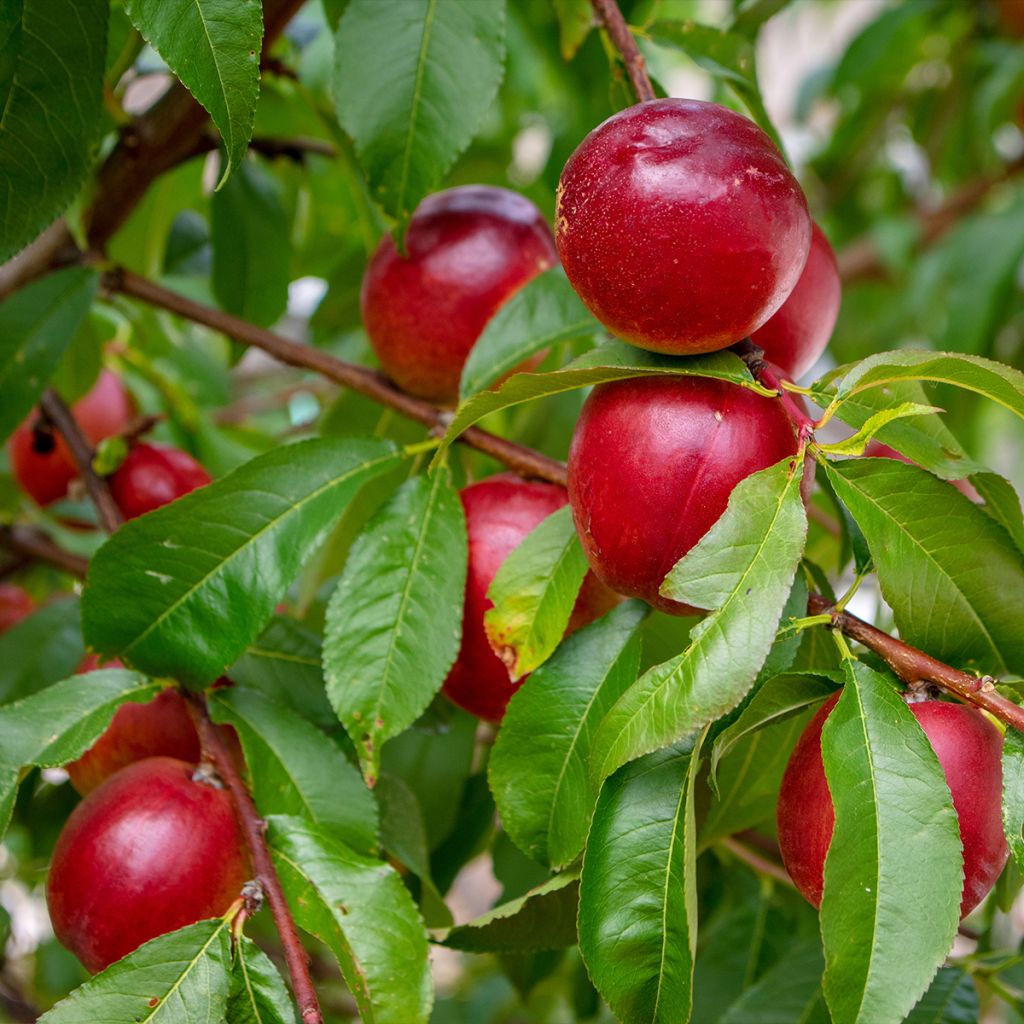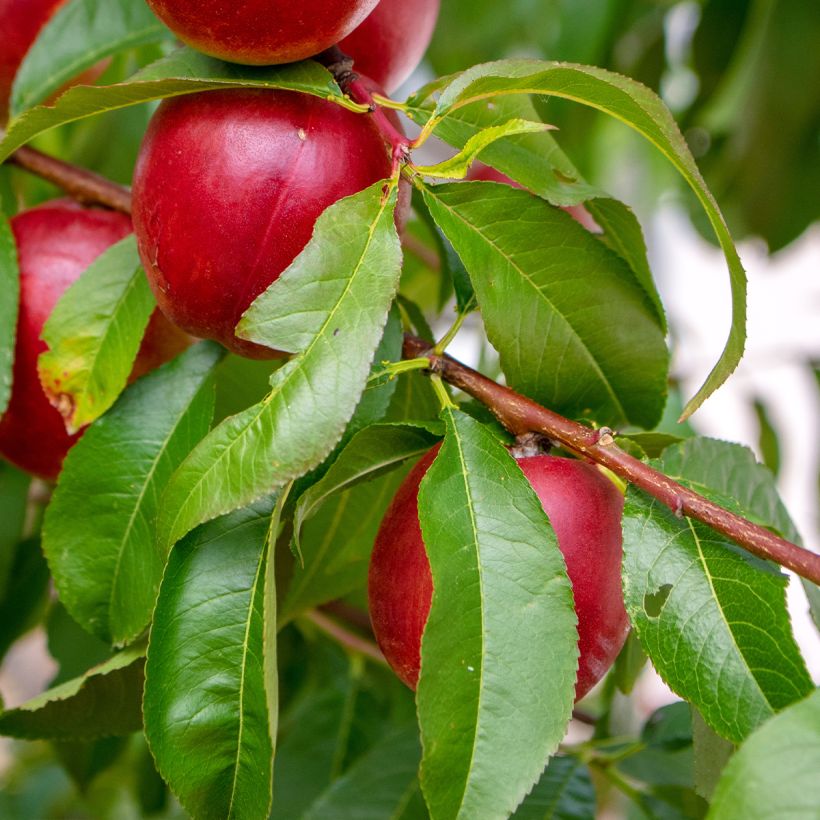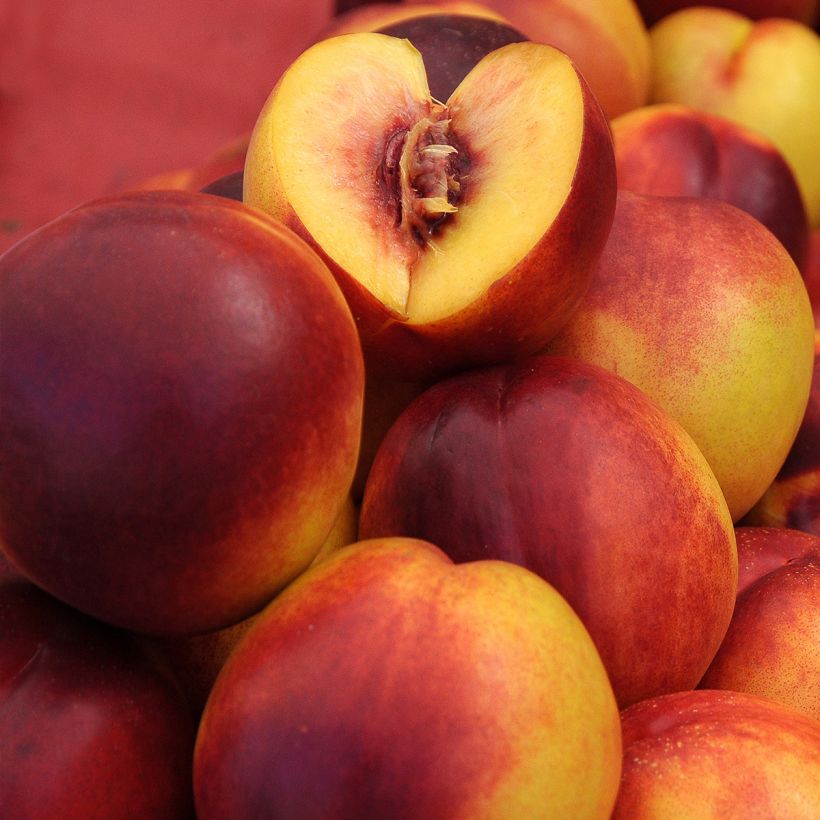

Prunus Nectared - Nectarine Tree
Prunus Nectared - Nectarine Tree
Prunus persica nucipersica Nectared 6
Nectarine
Special offer!
Receive a €20 voucher for any order over €90 (excluding delivery costs, credit notes, and plastic-free options)!
1- Add your favorite plants to your cart.
2- Once you have reached €90, confirm your order (you can even choose the delivery date!).
3- As soon as your order is shipped, you will receive an email containing your voucher code, valid for 3 months (90 days).
Your voucher is unique and can only be used once, for any order with a minimum value of €20, excluding delivery costs.
Can be combined with other current offers, non-divisible and non-refundable.
Home or relay delivery (depending on size and destination)
Schedule delivery date,
and select date in basket
This plant carries a 6 months recovery warranty
More information
We guarantee the quality of our plants for a full growing cycle, and will replace at our expense any plant that fails to recover under normal climatic and planting conditions.
Description
This Nectarine tree or Prunus persica nucipersa 'Nectared 6' is a late, vigorous, self-fertile and highly productive variety. Trained here as a goblet, which will make annual pruning easier, it will form a beautiful small tree with long, pointed leaves of a beautiful bright green. Its spring flowering is also decorative, when pink flowers appear. They will give way to large, appetising red fruits in summer. These yellow-fleshed nectarines are sweet and can be consumed fresh or cooked in desserts, compotes, and jams. Like the Peach tree, this tree is susceptible to peach leaf curl disease and requires regular treatments starting from the end of winter. 'Nectared 6' has the great advantage of bearing fruit quickly, usually from the 2nd year of planting.
The Nectarine tree belongs to the large Rosaceae family, which includes most of our fruit trees (Apple trees, Pear trees, Cherry trees, Plum trees). The species name "persica" was given to the peach tree, which was thought to originate from Persia. In reality, all cultivated forms of peaches are native to northern China. The Nectarine tree, in Latin Prunus persica nucipersa, is derived from a natural mutation of the peach tree that occurred in the 16th century. It is a hardy deciduous small tree that can be grown in all our temperate regions, with a preference for milder southern climates: its spring flowering, quite early, can indeed be destroyed by late frosts. Similar to the peach, the nectarine has a smooth and shiny skin, its flesh is yellow or white, but its stone is free, while the peach stone adheres to the flesh.
The Prunus persica nucipersa 'Nectared' is an American variety launched in 1972 and has produced several generations, respectively the 4th, the 6th, and the 9th. 'Nectared 6' is a variety that forms a small tree about 4 to 5 m (13 to 16ft) tall, by 3 to 4 m (10 to 13ft) wide. Like other Nectarine trees, it bears long, narrow, pointed leaves at their ends. In April it produces fairly decorative pink flowering that attracts bees, which in turn ensure pollination. This variety is self-fertile, so it does not require the presence of another tree. The fruits form during the summer and reach a good size at ripeness, around the end of August. With an appetising red colour, their flesh is yellow and is sweet and particularly flavoursome. They are equally suitable for eating fresh or for preparing desserts or jams. Rich in vitamin C, nectarines pair very well with wine and certain meats, such as duck.
It is important to choose the right location for this tree, especially in cooler northern regions, where full sun sheltered from cold winds is essential. The Nectarine tree 'Nectared 6' is interesting for cold climates, provided it is planted in a sheltered position (corner of a dry stone wall or other) to protect its delicate flowering from late frosts. To diversify your taste pleasure, plant it alongside other fruit trees such as the Mirabelle of Nancy Plum tree, which will delight you with its round yellow fruits at the same time as the Nectarine tree. Also consider berries such as Raspberry bushes with their delicate and incomparable melting texture, as well as Redcurrant bushes for their slightly acidic touch.
Report an error about the product description
Prunus Nectared - Nectarine Tree in pictures




Plant habit
Fruit
Flowering
Foliage
Botanical data
Prunus
persica nucipersica
Nectared 6
Rosaceae
Nectarine
Cultivar or hybrid
Planting and care
The Nectarine tree is preferably planted in March-April (or also in autumn in mild climates), in full sun, in a warm location sheltered from strong winds. Dig a hole two to three times wider and deeper than the pot. Place the tree with its pot in a basin of water for fifteen minutes, in order to moisten the entire root ball by capillarity. Place compost at the bottom of the hole. Install the tree in the hole, fill with soil mixed with compost. Gently tamp around the base of the tree as you fill, ensuring that the roots are in close contact with the soil. Be careful not to bury the collar of the tree (ideally, plant it at the same depth it was grown in the nursery, relying on the trace of the soil usually visible on the bark). Water generously to eliminate any air pockets around the roots.
The Nectarine tree has a semi-pivot root system. It will thrive in fairly deep, well-loosened and fertile soils. It also prefers a light and well-draining soil. This tree grows in soils with a pH close to neutrality (6 to 7), not appreciating acidic or overly alkaline soils.
Planting period
Intended location
Care
This item has not been reviewed yet - be the first to leave a review about it.
Haven't found what you were looking for?
Hardiness is the lowest winter temperature a plant can endure without suffering serious damage or even dying. However, hardiness is affected by location (a sheltered area, such as a patio), protection (winter cover) and soil type (hardiness is improved by well-drained soil).

Photo Sharing Terms & Conditions
In order to encourage gardeners to interact and share their experiences, Promesse de fleurs offers various media enabling content to be uploaded onto its Site - in particular via the ‘Photo sharing’ module.
The User agrees to refrain from:
- Posting any content that is illegal, prejudicial, insulting, racist, inciteful to hatred, revisionist, contrary to public decency, that infringes on privacy or on the privacy rights of third parties, in particular the publicity rights of persons and goods, intellectual property rights, or the right to privacy.
- Submitting content on behalf of a third party;
- Impersonate the identity of a third party and/or publish any personal information about a third party;
In general, the User undertakes to refrain from any unethical behaviour.
All Content (in particular text, comments, files, images, photos, videos, creative works, etc.), which may be subject to property or intellectual property rights, image or other private rights, shall remain the property of the User, subject to the limited rights granted by the terms of the licence granted by Promesse de fleurs as stated below. Users are at liberty to publish or not to publish such Content on the Site, notably via the ‘Photo Sharing’ facility, and accept that this Content shall be made public and freely accessible, notably on the Internet.
Users further acknowledge, undertake to have ,and guarantee that they hold all necessary rights and permissions to publish such material on the Site, in particular with regard to the legislation in force pertaining to any privacy, property, intellectual property, image, or contractual rights, or rights of any other nature. By publishing such Content on the Site, Users acknowledge accepting full liability as publishers of the Content within the meaning of the law, and grant Promesse de fleurs, free of charge, an inclusive, worldwide licence for the said Content for the entire duration of its publication, including all reproduction, representation, up/downloading, displaying, performing, transmission, and storage rights.
Users also grant permission for their name to be linked to the Content and accept that this link may not always be made available.
By engaging in posting material, Users consent to their Content becoming automatically accessible on the Internet, in particular on other sites and/or blogs and/or web pages of the Promesse de fleurs site, including in particular social pages and the Promesse de fleurs catalogue.
Users may secure the removal of entrusted content free of charge by issuing a simple request via our contact form.
The flowering period indicated on our website applies to countries and regions located in USDA zone 8 (France, the United Kingdom, Ireland, the Netherlands, etc.)
It will vary according to where you live:
- In zones 9 to 10 (Italy, Spain, Greece, etc.), flowering will occur about 2 to 4 weeks earlier.
- In zones 6 to 7 (Germany, Poland, Slovenia, and lower mountainous regions), flowering will be delayed by 2 to 3 weeks.
- In zone 5 (Central Europe, Scandinavia), blooming will be delayed by 3 to 5 weeks.
In temperate climates, pruning of spring-flowering shrubs (forsythia, spireas, etc.) should be done just after flowering.
Pruning of summer-flowering shrubs (Indian Lilac, Perovskia, etc.) can be done in winter or spring.
In cold regions as well as with frost-sensitive plants, avoid pruning too early when severe frosts may still occur.
The planting period indicated on our website applies to countries and regions located in USDA zone 8 (France, United Kingdom, Ireland, Netherlands).
It will vary according to where you live:
- In Mediterranean zones (Marseille, Madrid, Milan, etc.), autumn and winter are the best planting periods.
- In continental zones (Strasbourg, Munich, Vienna, etc.), delay planting by 2 to 3 weeks in spring and bring it forward by 2 to 4 weeks in autumn.
- In mountainous regions (the Alps, Pyrenees, Carpathians, etc.), it is best to plant in late spring (May-June) or late summer (August-September).
The harvesting period indicated on our website applies to countries and regions in USDA zone 8 (France, England, Ireland, the Netherlands).
In colder areas (Scandinavia, Poland, Austria...) fruit and vegetable harvests are likely to be delayed by 3-4 weeks.
In warmer areas (Italy, Spain, Greece, etc.), harvesting will probably take place earlier, depending on weather conditions.
The sowing periods indicated on our website apply to countries and regions within USDA Zone 8 (France, UK, Ireland, Netherlands).
In colder areas (Scandinavia, Poland, Austria...), delay any outdoor sowing by 3-4 weeks, or sow under glass.
In warmer climes (Italy, Spain, Greece, etc.), bring outdoor sowing forward by a few weeks.






























